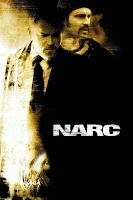Gang Violence and Prevention
29 people have been killed and more than 83 injured thus far in the year 2018 due to guns. As many as 10 of these shootings have been in, or very close to, Regent Park. Why is this happening? Mayor John Tory thinks gang violence may have something to do with it.
“Who were the people that pulled the trigger on Queen Street? Were they the boy scouts? Who goes by in a car and fires a gun out the window at people on the sidewalk?"
Tory is referring to the recent shooting on Queen Street West, which took the lives of Toronto natives, rapper Smoke Dawg and producer Koba Prime. Tory has said statistics show that 75% of the shootings in Toronto are related to gang activity in some way. That’s a very large portion. Chief of Police Mark Saunders also had something to say about the many shootings this year. "The vast majority of gunplay in the city can be associated with a street gang. Having said that, being surgical, being strategic, and being focused with that gang subculture is a huge concern of mine. We've got a plan in play to look after it over the course of the summer."
Tory and Saunders have decided to implement new strategies in order to combat the ongoing supposed gang violence. 200 officers will now be taking on night shift duties across the city. The idea of hiring new police officers has been criticized by some as they think “overpolicing” will stir up more issues in the community, but the idea has been supported by others. What is the right way to deal with the rise of gang activity/violence in the community? There may not be just one right answer for that, but to start, we need to at least understand and identify the reasons that youth join gangs. Many believe that the root causes of joining or creating a gang are due to broken homes, inequality, and poverty.
There seems to be a correlation between crime-ridden neighborhoods and low-income neighborhoods; therefore, poverty can be a big contributing factor in gang violence. Inequality and growing up in broken homes could also be a very big factor contributing to joining a gang. As Robert T Muller, Ph.D. puts it, “...experts propose that young adults join gangs because they both act as a surrogate family, as well as provide a sense of belonging, power, control and prestige; all things that are commonly identified as absent in childhood among gang initiates.”
Now that we’ve identified possible causes, we can identify appropriate solutions. Gang prevention programs are something to look into. Mayor Tory has recently said that city staff is asking the federal government for increased funding for community programs. These programs support youth and communities exposed to gang and gun violence.
Prevention Intervention Toronto (PIT) was a program administered by the City of Toronto, and it was implemented between December 2009 and March 2012. This program set out to combat youth gang initiation and gang violence over the course of 36 weeks through individual needs assessments, an assignment of a case manager, and one-on-one counseling.
At the end of the program, PIT participants were said to have shown an “increase in pro-social attitudes towards crime, violence and gangs.” They also have evidence that participants indicated a statistically significant decline in gang membership. “For example, while 34% of PIT participants admitted gang membership during the pre-test interview, this figure dropped to only 9.0% during the one year follow-up interview.”
With many other prevention programs having similar results as PIT, one can only wonder if long-term, sustainable funding to community prevention programs could be a solution. Is it going to fix the issue entirely? Absolutely not. But it’s definitely a start.
By: Kaleb Marr
Regent Park Focus Media Arts Centre



Comments
Post a Comment